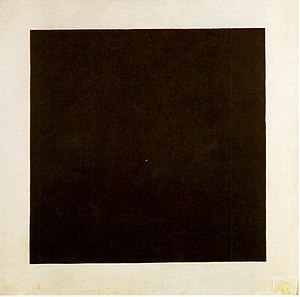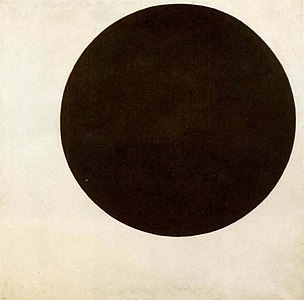User:Yitzilitt/Signpost Opinion1
 Article display preview: Article display preview: | This is a draft of a potential Signpost article, and should not be interpreted as a finished piece. Its content is subject to review by the editorial team and ultimately by JPxG, the editor in chief. Please do not link to this draft as it is unfinished and the URL will change upon publication. If you would like to contribute and are familiar with the requirements of a Signpost article, feel free to be bold in making improvements!
|
MAKING WIKIPEDIA MORE ACCESSIBLE TO NEWCOMERS
This post is adopted from a discussion originally posted here.
It is no secret that Wikipedia has trouble gaining and maintaining new editors. Despite the oft-repeated saying that "anyone can edit," the truth is that very few people actually do so, for a number of reasons. There is an immensely steep learning curve to editing (if you don't want your work getting immediately reverted), and most people don't have the time or energy to learn the esoteric knowledge required to contribute to the site. The bureaucratic culture of Wikipedia is also a deterrent for many newcomers: the copious amounts of jargon, the policies and guidelines (and their countless exceptions), are all enough to make anyone's head spin.
Why is this?
In a recent post at Wikipedia's "Village Pump," I mentioned that in my experience, for every extra step required to do something, I become roughly half as likely to complete the task, even if each individual step is simple. Unfortunately, many tasks essential to Wikipedia editing require multiple, often unnecessarily complex steps. If we can reduce the number of steps (or the amount of total work) that new editors have to go through, it seems reasonable to assume that more people will become able to participate in the editing process.
Additionally, the Wikipedia observed by new editors looks very different than what is typically observed by more experienced Wikipedians. This is partly because we literally visit different sections of the website (when was the last time you pressed the "Learn to edit" button in the side tab?), and it's also partially because we've gotten so used to some quirks of the site that we fail to recognize them as quirks anymore (does typing "~~~~" to sign your name feel weird to you?). Even if you are on the same page as a newcomer, it's very easy to fall prey to the fallacy that what is obvious to you is obvious to outsiders. You can see this happen all the time on talk pages about math, where it's not uncommon to see editors debate if the exact same paragraph is oversimplified to the point of inaccuracy, or overly technical to the point of incomprehensibility.
In order to try to bypass these acquired baises, I decided to roleplay as a newcomer to Wikipedia. The following is an account of my journey attempting to create a new page on a topic a newcomer might want to write about, while trying as hard as possible not to rely on my existing experience. My ultimate goal? To find any potential points of redundancy or unnecessary complexity along the way.
From the Beginning...
[edit]As a newcomer, let's say I start at the main page, and I want to write an article about someone I know who's mildly famous. This is a common request I get from friends who hear about my hobby, and seems to make up a large portion of draft articles at AfC. I decided to use my father (Rabbi Gershon Litt) for specifics, since he's on the lower edge of notability, I have a genuine conflict of interest there (both very common for topics beginners are attracted to), and I won't be throwing away a topic others are likely to create a page for.
The first thing I do is probably click on the "Help" link, or maybe "Learn to edit," looking for a way to add an article.
Two Paths Diverge (In a Blue-Linked Wood)
[edit]
If I start with the latter, I'll almost certainly click on the big blue "Get Started" button, which leads to Help:Introduction to Wikipedia—which has no information on creating a new page, so I'll head back. Maybe instead I'll click on one of the two "Editing" buttons, which leads to Help:Introduction to editing with VisualEditor/1 or its markup editor equivalent. Both have a link to a page titled "Creating new articles"—now we're getting somewhere, four steps in! That page (finally) has a link to the Wikipedia Article Wizard, which seems pretty simple to work with, so I'll pause here for now.
Let's say I start with the "Help" link instead. This is a lot better: there's the clearly-labeled section "Create a new article or upload media," which prominently links to Help:Your first article and the Wikipedia Article Wizard. Far fewer steps with no obvious decrease in readability!
[My take here so far is that the "learn to edit" link should be taken off the left tab by default, as it seems to be an actively frustrating experience to navigate if you don't already know the material, and the "help" page links to the same stuff already. The redundancy just gives me decision fatigue / analysis paralysis.]
The Wikipedia Article Wizard (of Oz?)
[edit]
So we've finally stumbled upon the Wikipedia Article Wizard, after our difficult journey. What then? I go through the steps it presents me, answering as accurately as I can for the goal of writing about my father. I'm led to this page on disclosing COI editing, which tells me to "Edit your user page by clicking here." I click the link, and BOOM—I get a "Permission error"! I'm editing as an IP address, you see, because I'm a newcomer who was told on the main page that "anybody can edit" Wikipedia. And IP addresses can't make user pages. Okay, no problem, that's just a simple extra step (or steps) of creating an account for myself. I do all that, and return to the article creation Wizard (assuming I can find it again). I still need to disclose on my user page, but at this point I'm feeling lazy and I haven't written a single word yet, so I decide to skip that for now and hope nobody cares enough to call me out on it [irl I did disclose of course, but that's "out of character" so I'm pretending I didn't]. I falsely press the "I have disclosed" button (while cackling like the supervillian I am), to be greeted with this page, which gives me three options:
- request the article be written by someone else.
- request another editor to make an edit on your behalf.
- press the "Next" button.
If you haven't tried option 1 before, it's worth pointing out here that such article requests almost never get made, and even if they do, it can be a period of months or even years before anyone bothers to reply. This is pretty much a graveyard of unanswered requests for articles. For my father, who's a Rabbi, I found myself going to Wikipedia:Requested articles/Biography/By profession#Judaism, where I was told to instead head to Wikipedia:Requested articles/Biographies/Jewish figures#Jewish philosophers, rabbis, cantors, where I see a few dozen redlinked Rabbis, and a page where the revision history shows edits from 2014 on its first page. In short, a dead end.
If I press the link on option 2, I'm directed towards Wikipedia:Edit requests, a page that's pretty impenetrable for an unexperienced editor. If I manage to make it all the way through that page, I find myself being directed to the Edit Request Wizard, which honestly looks pretty helpful! [why wasn't I linked directly to this from the other Wizard?] I go through the Wizard until I reach Wikipedia:Edit Request Wizard/COI, where I insert "Gershon Litt," the name of the page I want to see created, into one of the two input boxes given. No matter which one I use, the result is the same. I'm led to a talk page for a currently non-existent article, containing this helpful warning that the page will shortly be deleted by an administrator.
Creating The Draft Page
[edit]
Clearly, requesting someone else to make a page about my beloved father isn't going to go anywhere. I go back to where I left off in the article creation Wizard, and press the "Next" button. I enter "Gershon Litt" into the textbox, and finally...I arrive at a blank draft page, with a few basic instructions on top. Nice!
I may be [role-playing as] a beginner to Wikipedia editing, but I'm not stupid. I go try to find a Wikipedia page that looks similar to what I'm going to want mine to look like, to be able to reference the writing style and markup used there. I find a page on Rabbi Joshua Berman; looks close enough. Using the visual editor (which I got a pop-up asking if I wanted to use, though it was unclear what it was), I quickly add some info I think is relevant, and use the "cite" button to add citations. I also threw in a questionable citation to a website with an obvious COI (it's the first citation on the page), because I've never seen a beginner not make that mistake at least once. I admit I wasn't super careful to keep things to what I'd expect a beginner to write here, though I tried to be looser than I normally would, with some lightly promotional language (another common and usually honest mistake) at the end of the first paragraph. I decided to publish the draft page here to allow for reference, though I won't submit it to AFC and clog up the backlog unless others want me to do that for some reason. What I would expect to happen if I were to submit the draft for review (this is based on semi-anonymous anecdotal data) is that I would be rejected for the flaws I included in the draft, even though those flaws are probably resolvable by future editors, and likely wouldn't get the page removed if it were already an article in Mainspace. Perhaps I'm wrong about that, but that is my intuition.
What Did We Learn?
[edit]In sum, to get from the Main Page of Wikipedia to a draft page that may or may not be accepted into Mainspace, it takes at least:
- 4 steps if you start with "Learn To Edit" (mostly redundant)
- 3 steps if you start with "Help" and want the Article Wizard ("Editing" leads you back)
(It would also theoretically be possible to do this in only two clicks by starting directly from "article creation wizard," but we're trying not to rely on our existing knowledge of how to edit here.)
This is an unreasonable number of steps required in order to even begin getting started with your first contribution. This all strongly suggests that there's probably some potential improvement in clarity / simplification that can happen along the way.
I hope this role-play is helpful in illustrating some flaws of the current system, and I remain hopeful that with some effort we can make this process much easier and less stress-inducing than it currently is.
Of course, I'm well aware that this role-play isn't a perfectly accurate reflection of what a newcomer's experience is like——it is easy as someone who knows what they are doing and has edited before to make things look easier than they actually are (or conversely, to underestimate the knowledge base of most newcomers). But this is a start.
I'd love any feedback people might have! What did you find complicated as a beginner? Where were obvious places where things could be improved? Have you ever tried something similar, and if so, what did you learn?
This page is a draft for the next issue of the Signpost. Below is some helpful code that will help you write and format a Signpost draft. If it's blank, you can fill out a template by copy-pasting this in and pressing 'publish changes': {{subst:Wikipedia:Wikipedia Signpost/Templates/Story-preload}}
Images and Galleries
|
|---|
To put an image in your article, use the following template (link): This will create the file on the right. Keep the 300px in most cases. If writing a 'full width' article, change
Placing (link) will instead create an inline image like below The significant thing is feeling, as such, quite apart from the environment in which it is called forth.
To create a gallery, use the following Each line inside the tags should be formatted like
If you want it centered, remove t |
Quotes
| |||
|---|---|---|---|
To insert a framed quote like the one on the right, use this template (link): If writing a 'full width' article, change
To insert a pull quote like
use this template (link):
To insert a long inline quote like
use this template (link): |
Side frames
|
|---|
|
Side frames help put content in sidebar vignettes. For instance, this one (link): gives the frame on the right. This is useful when you want to insert non-standard images, quotes, graphs, and the like.
For example, to insert the {{Graph:Chart}} generated by in a frame, simple put the graph code in to get the framed Graph:Chart on the right. If writing a 'full width' article, change |
Two-column vs full width styles
|
|---|
|
If you keep the 'normal' preloaded draft and work from there, you will be using the two-column style. This is perfectly fine in most cases and you don't need to do anything. However, every time you have a However, you can also fine-tune which style is used at which point in an article. To switch from two-column → full width style midway in an article, insert where you want the switch to happen. To switch from full width → two-column style midway in an article, insert where you want the switch to happen. |
Article series
|
|---|
|
To add a series of 'related articles' your article, use the following code or will create the sidebar on the right. If writing a 'full width' article, change Alternatively, you can use at the end of an article to create
If you think a topic would make a good series, but you don't see a tag for it, or that all the articles in a series seem 'old', ask for help at the WT:NEWSROOM. Many more tags exist, but they haven't been documented yet. |
Links and such
|
|---|
By the way, the template that you're reading right now is {{Editnotices/Group/Wikipedia:Wikipedia Signpost/Next issue}} (edit). A list of the preload templates for Signpost articles can be found here. |








Discuss this story